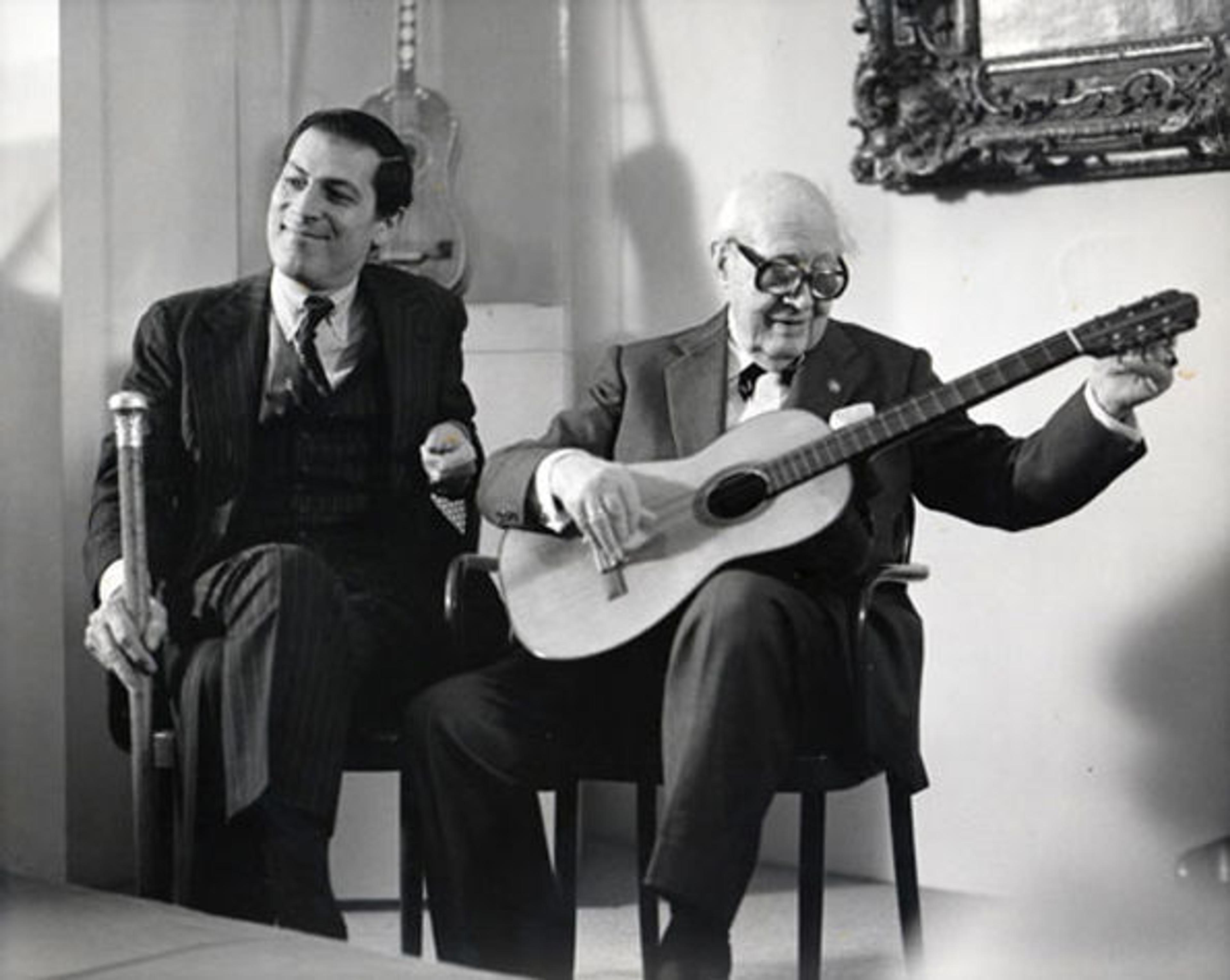«This Sunday, February 8, marks the presentation of the fifty-seventh Grammy Awards. Although the ceremony is taking place in Los Angeles this year, here in New York, displayed among the treasures housed at The Metropolitan Museum of Art, are instruments once played by famous and influential musicians who have received or were nominated for Grammys during their careers.»
Those instruments currently on view include Ramirez and Hauser guitars used in recordings of the great Andrés Segovia (1893–1987), who received a Grammy for Best Classical Performance, Instrumental Soloist (1958) for his Segovia Golden Jubilee. Twenty-eight years later, he was celebrated by the National Academy of Recording Arts and Sciences with a lifetime achievement award (1986).

Former Metropolitan Museum Director Philippe de Montebello in the galleries with Andrés Segovia, 1986. Photograph © Richard Lombard
Two-time nominee Christopher Parkening (b. 1947), whose Ramirez guitar is in the Met's collection, was proclaimed by Segovia as "one of the most brilliant guitarists in the world."
Julian Bream (b. 1933), another classical guitarist, was awarded four Grammys—in 1964, 1967, 1972, and 1973—the final award received when he and John Williams won the Grammy for Best Chamber Music Performance. The Museum owns a nineteenth-century parlor guitar made by René François Lacôte that was once in the personal collection of Bream. The guitar has a storied provenance: In addition to belonging to Bream, it bears the signature on its label of the nineteenth-century guitar virtuoso Fernando Sor (1778–1839). Also exhibited is a 1940 guitar made by Hermann Hauser that was loaned by Rose Augustine to Bream for many recordings and performances. The instrument is now on loan to the Museum from the Augustine Foundation.
Grammy winner Gregor Piatigorsky's (1903–1976) Stradivari cello is a featured treasure in gallery 684. Piatigorsky garnered three Best Chamber Music awards, along with violinist Jascha Heifetz, in 1961, 1962, and 1964.

Left: Antonio Stradivari (Italian, 1644–1737). The Batta-Piatigorsky Violoncello, 1714. Cremona, Italy. Spruce, maple, ebony. The Metropolitan Museum of Art, New York, Private Collection U.S.A. (L.2013.71a–g)
In our woodwind section, clarinetist Benny Goodman (1909–1986) is represented by a Buffet, Crampon & Cie clarinet used towards the end of his career. Goodman's was the first jazz band to play at Carnegie Hall, but he was also known to regularly cross genres, issuing classical recordings and commissioning pieces by Bela Bartók, Leonard Bernstein, and Aaron Copland. His three Grammys include a lifetime achievement award in 1986 and two posthumous awards in 1987 and 1998. Other recognitions include election to the Jazz Hall of Fame (1957) and a Kennedy Center Award (1982).
Jazz guitarist Jim Hall (1930–2013), a six-time Grammy nominee, is represented in the galleries by his James D'Aquisto guitar. His nominations included Best Jazz Performance by a Group (1972), with bassist Ron Carter, and Best Jazz Performance by a Soloist, Instrumental (1976). Hall also received the New York Jazz Critics Award for Best Jazz Composer/Arranger (1997), the NEA Jazz Masters Award (2004), and was appointed chevalier in France's prestigious Ordre des Arts et des Lettres (Order of Arts and Letters) (2006).